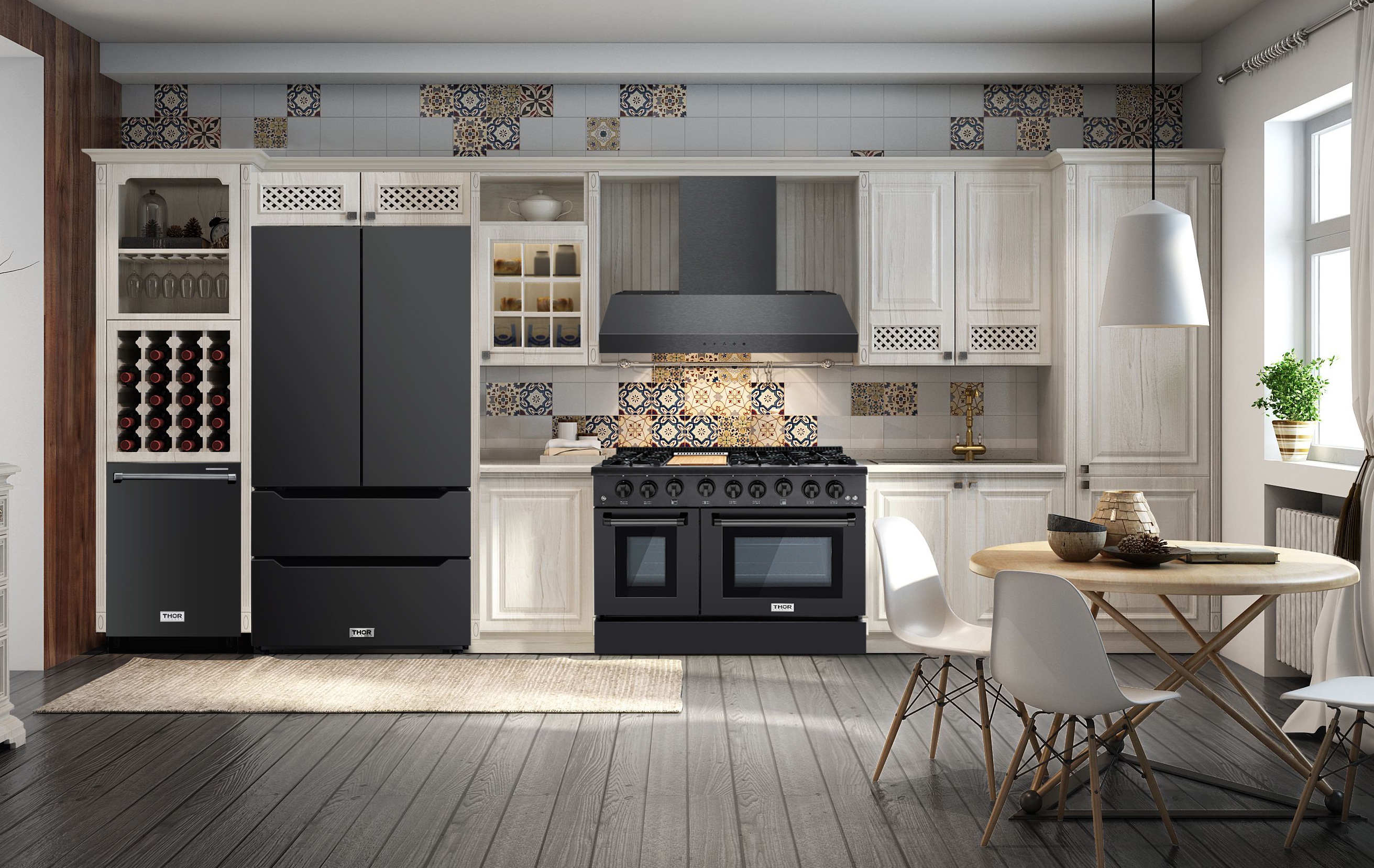
The short answer is yes. Whirlpool Corporation owns both brands and manufactures appliances under the Whirlpool, KitchenAid, Maytag, Amana, and JennAir names. But while they share a parent company, Whirlpool and KitchenAid appliances have important differences that set them apart.
Whirlpool’s history stretches back over a century. The brand was founded in 1911 as an electric motor company in Michigan. In the 1950s, Whirlpool manufactured some of the first automatic washers and dryers for Sears-Roebuck. The company expanded into refrigeration and cooking appliances and eventually acquired other brands like KitchenAid.
KitchenAid’s origins trace back to 1919 when the brand was launched by The Hobart Manufacturing Company to produce stand mixers. The iconic KitchenAid mixer rapidly grew in popularity among home bakers and cooks. Over the years, KitchenAid diversified into other small kitchen appliances. In 1986, Whirlpool acquired KitchenAid and integrated it as a distinct premium brand.
So while Whirlpool has deeper roots in major home appliances, KitchenAid built its reputation on specialty and small appliances before joining the Whirlpool family.

Within the Whirlpool Corporation, their appliance brands target different consumer segments:
In essence, Whirlpool targets the mass market while KitchenAid goes after a high-end niche. But there is some overlap between the two, especially in their refrigerator and dishwasher selections. Let’s take a closer look at how they differ across major appliance categories:
Whirlpool and KitchenAid produce refrigerators at good, better, and best quality tiers. At the entry-level, Whirlpool’s pitch is no-frills functionality while KitchenAid stresses stylish design. In the premium space, KitchenAid boasts signature features like solid metal handles, LED touch interfaces, and adjustable interior storage.
However, some refrigerator models share identical specs with minor cosmetic differences to justify KitchenAid’s price premium. For most buyers, a high-end Whirlpool will provide the same performance as a KitchenAid for less money.
KitchenAid’s extensive range of stand-alone ranges, double ovens, and cooktops clearly outstrip Whirlpool’s offerings. Their pro-style models with convection baking, restaurant-worthy burners, and steam-assist are geared for serious home chefs.
Whirlpool ranges and ovens prioritize simplicity and affordability. They lack the advanced cooking modes and luxurious finishes of high-end KitchenAid appliances. KitchenAid commands a significant price premium for pro-grade cooking performance.
In dishwashers, the differences are again less significant. KitchenAid dishwashers boast sleeker exteriors with recessed handles and stainless steel finishes. They also offer options like built-in water softeners, heated drying, and stainless steel interiors.
But Whirlpool’s premium dishwashers can match KitchenAid on noise levels, cleaning performance, and flexibility. You’ll have to weigh aesthetics against price when choosing between the two brands for dishwashers.
For countertop microwaves, Whirlpool provides a much wider selection of sizes, power levels, and configurations than KitchenAid. Whirlpool microwaves start around $100 for 0.7 cubic feet capacity while KitchenAid models range from $300 for compact sizes to over $1000 for large, commercial-grade units.

All Whirlpool and KitchenAid appliances come with one-year limited warranties covering parts and labor. For major appliances, you also get a longer 5-10 year limited parts warranty. Overall, their warranty coverage is similar.
Both brands use the same Whirlpool service network for repairs. Replacement parts should be readily available for Whirlpool and KitchenAid appliances. KitchenAid products may have a slight advantage for longevity thanks to their sturdier builds and better quality components.
Here are a few guidelines on deciding between Whirlpool and KitchenAid:
Either brand will serve you well with reliable, durable appliances backed by Whirlpool’s reputation. Let your needs, budget, and personal tastes guide your ideal appliance mix across the two brands.

Are Whirlpool and KitchenAid spare parts interchangeable?
For some models, especially refrigerators and dishwashers, Whirlpool and KitchenAid share common internal components and parts may be interchangeable. But you should always reference official part numbers and seek professional guidance.
Which brand has better customer support?
Both brands use the same customer support system as they are owned by Whirlpool. You can expect similar levels of customer service for both Whirlpool and KitchenAid appliances.
Do KitchenAid appliances have longer lifespans?
On average, KitchenAid appliances may last slightly longer thanks to premium materials and solid engineering. But Whirlpool appliances are also built to provide years of reliable service with regular maintenance and care.
Whirlpool and KitchenAid offer overlapping selections of home appliances across a wide range of prices and features. While KitchenAid positions itself as a high-end brand, for some products like refrigerators and microwaves, Whirlpool provides similar quality for less money. Consider your budget, needs, and style preferences when deciding between the two brands.
